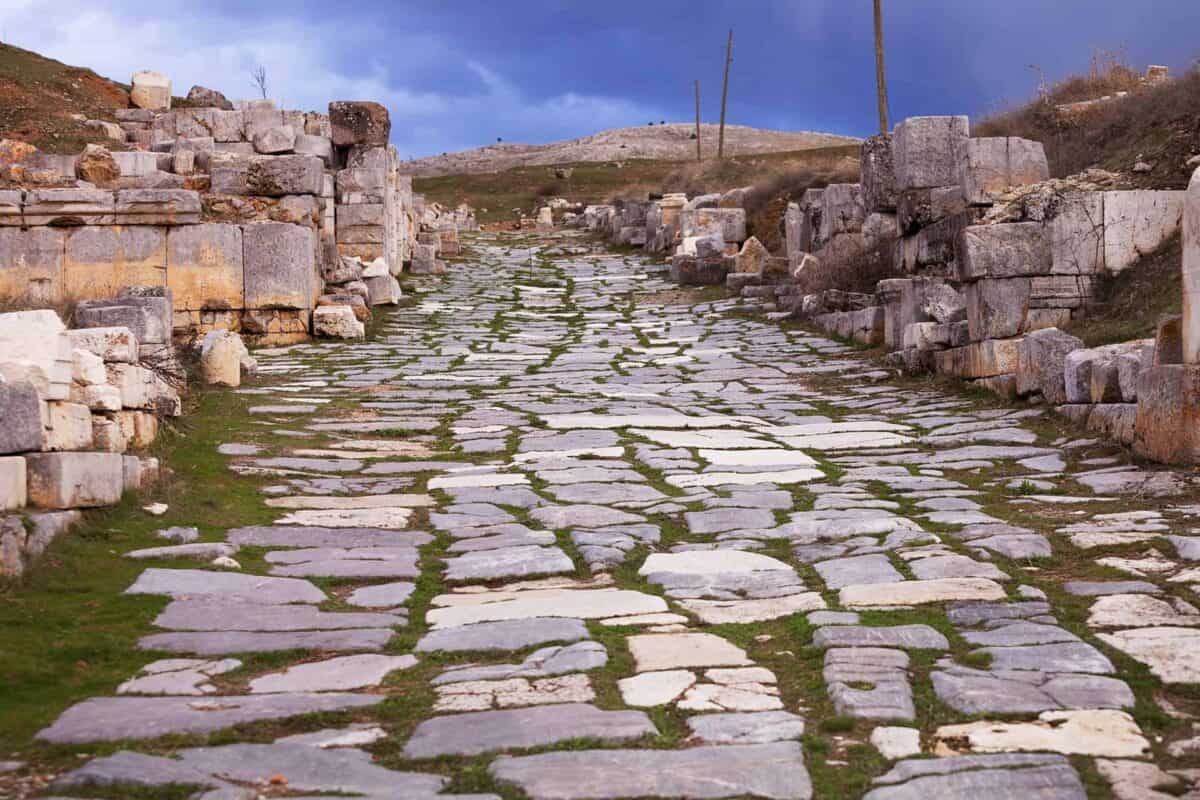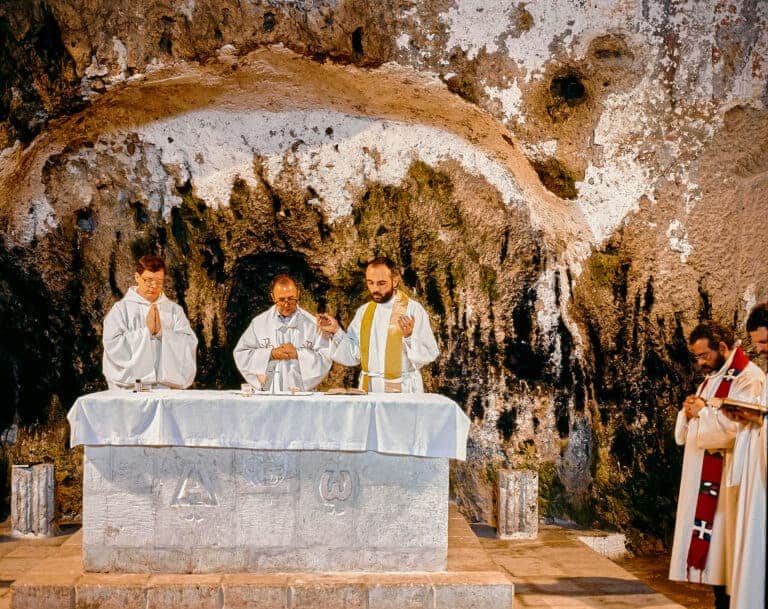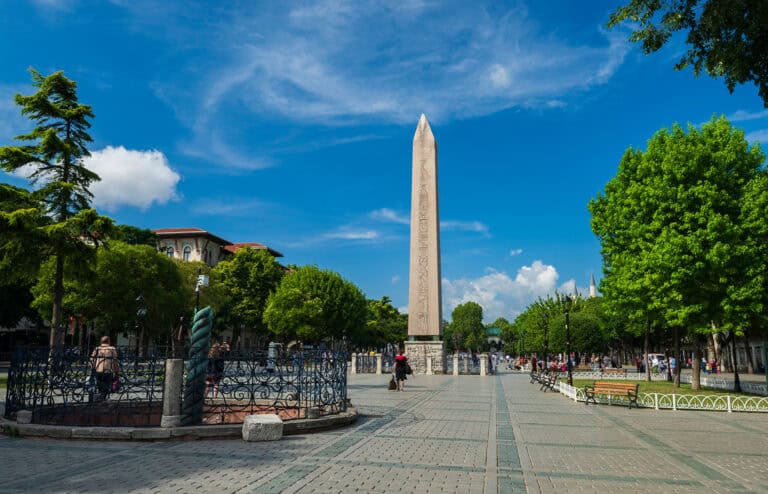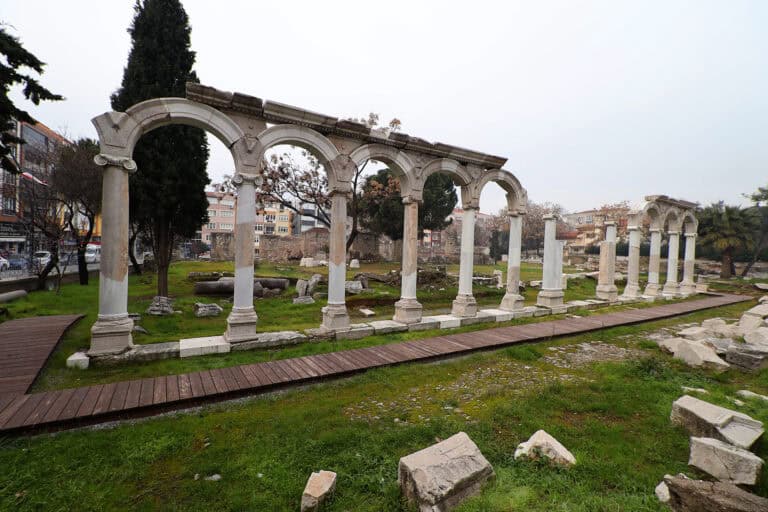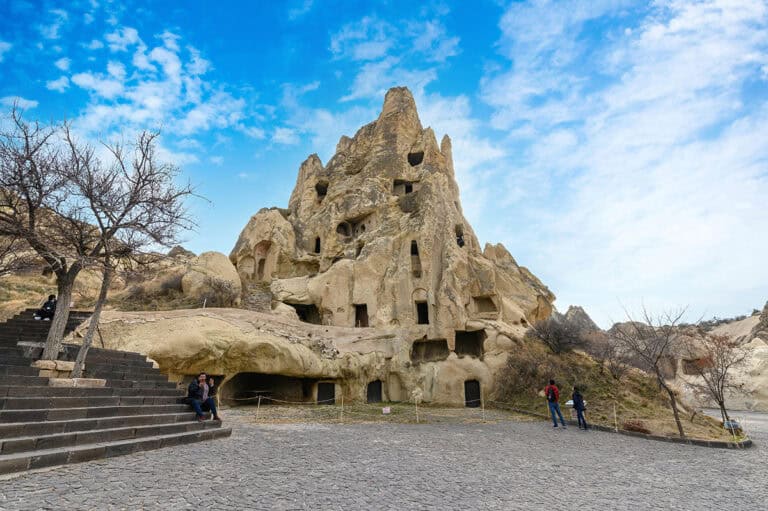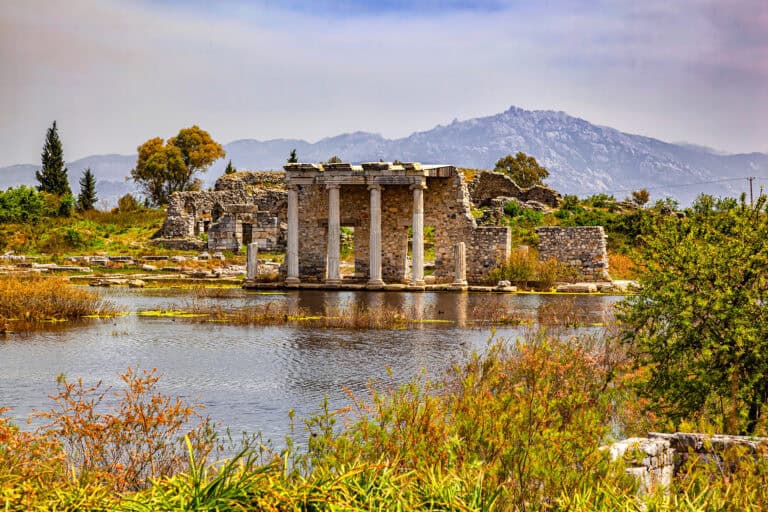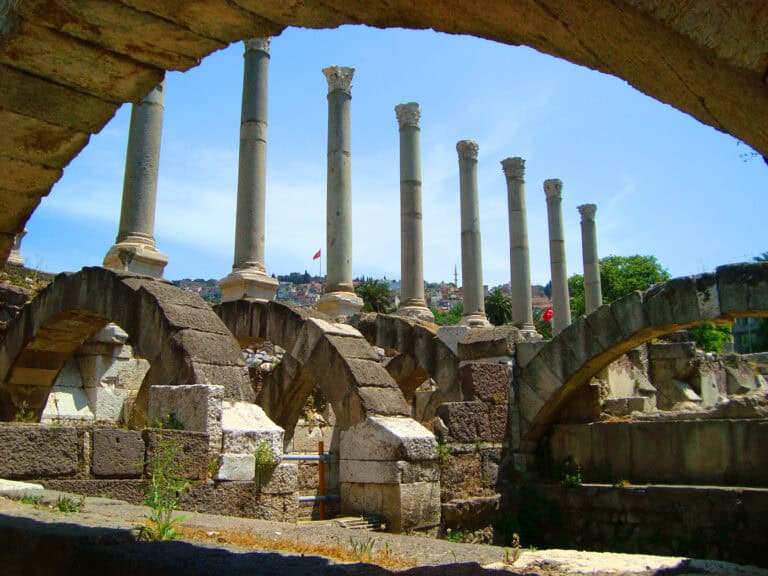Pisidian Antioch was an important city and military base during the Hellenistic and Roman Periods. It was in the Roman Province of Pisidia, in southwestern Asia Minor (today’s Türkiye). To distinguish it from the many other cities that were also called Antioch, it was called “Pisidian Antioch” or “Antioch in Pisidia.”
In its day, Pisidian Antioch was a grand, wealthy, and important city because of its strategic position. It was at an elevation of 1,236 meters (4,055 feet), surrounded by mountains, with the Anthius River (today in Turkish called Yalvaç Çayı) flowing on its eastern side. Its acropolis, surrounded by defensive walls, measured around 460,000 square meters (115 acres).
Pisidian Antioch was also at an important crossroads of the Mediterranean, Aegean, and Central Anatolian regions. It was on the Via Sabaste, an east-west Roman road between Ephesus and the Cilician Gates, a road the Apostle Paul and Barnabus used to get there from Perga.
The city was designed according to the Hippodoman City Plan, with a main 400-meter (437-yard) long north-south street (called a Cardio Maximus) and a 320-meter (350-yard) long east-west street (called a Decumanus Maximus), intersecting at a right angle next to Tiberius Square. Smaller streets radiated from these two main streets to form city blocks.
The Turks now call the city “Isparta Antiochaeia” since it is now in the Turkish province of Isparta. Directional signs pointing the way to the site refer to it as “Pisidia Antiocheia.”
Early History of Pisidian Antioch
Prehistory
Archaeological evidence shows that the area of Pisidian Antioch was inhabited since the Paleolithic Age and that a cult of Cybele (Kybele), the ancient Anatolian mother goddess, and of Men, the moon god, existed before Greek settlers arrived.
Founding of Pisidian Antioch
Pisidian Antioch was founded by Seleucus I Nicator (reigned 305—281 BC) or by his son, Antiochus I Soter (reigned 281—261 BC), or by both.
Seleucus was one of Alexander the Great’s generals. After Alexander died, his generals, collectively called the Diadochi, divided their conquered lands among themselves. Seleucus took control of, among other places, the region of Pisidia. He founded some 60 cities and named 16 of them Antioch after his father, Antiochus. To distinguish it from the other cities called Antioch, this one was known as Pisidian Antioch, or “Antioch in Pisidia.” But there is another, perhaps better, case supporting Antiochus I as the founder of Pisidian Antioch, and naming it after himself.
The city was populated by people who had been moved from nearby settlements, many of them Jews. Soldiers also made up much of the population to defend it from the Galatians, a Celtic tribe that had immigrated from Europe and had settled in the region in the 3rd Century BC.
The Romans, then the Pergamese, Take Control of Western Asia Minor
188 BC: The Romans Defeat Seleucid King Antiochus III
The Romans, allied with King Eumenes II of Pergamum, defeated the Seleucid King Antiochus III. As a part of the treaty ending the hostilities, Eumenes II is given control of a large part of Western Asia Minor, including Pisidian Antioch.
129 BC: King Eumenes III Bequeaths His Kingdom to the Romans
Pergamene King Eumenes III died without an heir. He bequeathed his kingdom to the Romans to avoid civil wars over the throne.
The Romans Again Take Control
25 BC: The Romans Create the Province of Galatia and Rebuild Pisidian Antioch
The Romans established the Province of Galatia, which included Pisidian Antioch. Rome invested heavily in Pisidian Antioch. They demolished the Greek buildings and built larger, more impressive Roman ones. The city became a mix of Greek and Roman culture, with Greek and Latin being widely spoken. The city became even more of a military stronghold, with 3,000 retired Roman legionnaires (soldiers) and their families being located to live in and around the city and maintain order whenever required.
6 BC: The Romans Build the Via Sabaste
The Romans built the Via Sabaste, a road to move troops and supplies around the area more easily. The Via Sabaste enabled the Romans to subdue the local mountain tribes raiding the city. The Via Sabaste contributed greatly to the success of Pisidian Antioch since it was at the north end, with Perga being around 200 kilometers (124 miles) away on the south end, on the Mediterranean coast. They later added another branch that stretched some 150 kilometers (93 miles) southwest to Iconium.
c. 48 AD: The Apostles Paul and Barnabus Use the Via Sabaste on the First Missionary Journey
Paul and Barnabus walked on the Via Sabaste from Perga to Pisidian Antioch, then to Iconium. Paul probably also used the road on subsequent missionary journeys.
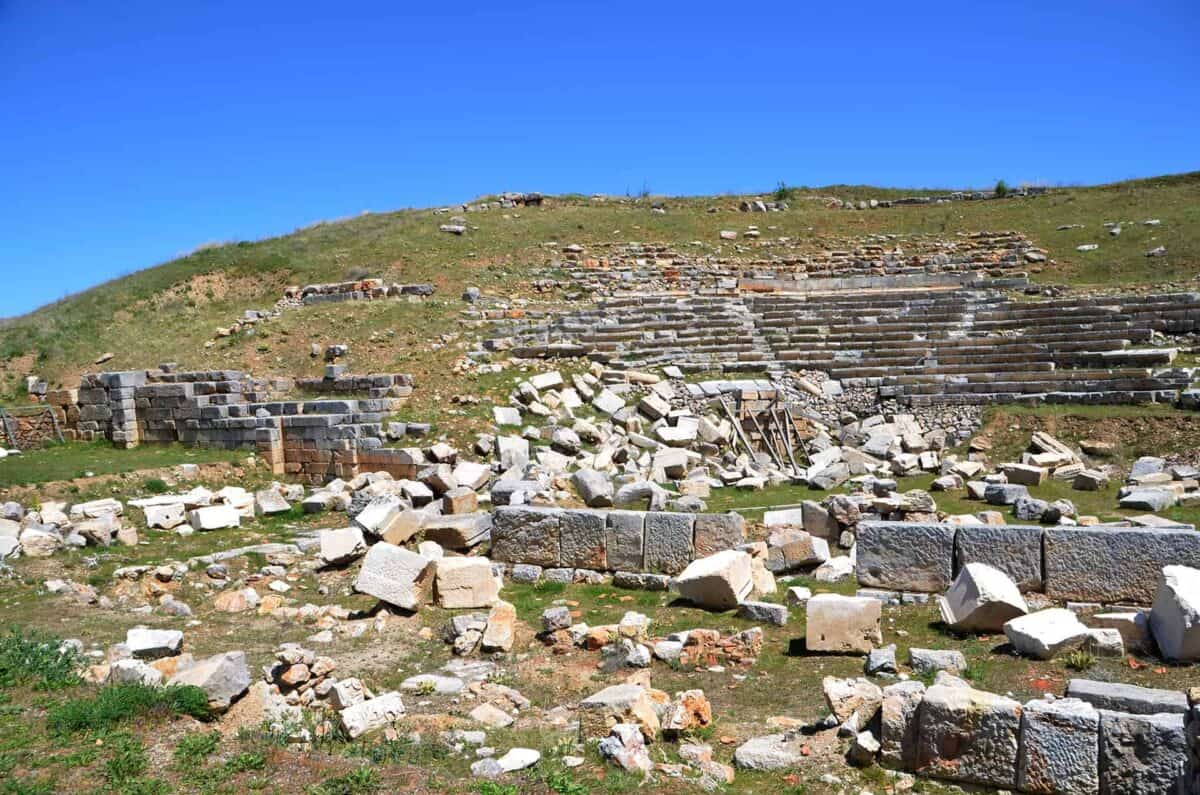
Pisidian Antioch in The Bible
Pisidian Antioch was at the height of its success and fame when the Apostle Paul and Barnabus visited the city during Paul’s first missionary journey.
Why Did the Apostles Paul and Barnabus Go to Pisidian Antioch?
Besides Pisidian Antioch’s substantial Jewish population, the apostles Paul and Barnabus may have gone to the city at the request of Sergius Paulus, the Proconsul of Cyprus. Paulus, at his palace in Paphos, Cyprus, had heard Paul’s preaching and converted to Christianity. Pisidian Antioch was Paulus’s hometown. In the nearby Yalvaç Museum, you can see a stone building bearing Sergius Paulus’s name.
What Happened at Pisidian Antioch in the Bible?
At Pisidian Antioch, Paul preached on the Sabbath to the Jews at the synagogue and then to the rest of the people. His teaching was so well received that “almost the whole city” gathered to hear it. There were converts but also objectors, with the objectors inciting the city’s leaders and stirring up persecution.
Paul and Barnabus were driven out of the city and went to Iconium to continue their journey. They passed through Pisidian Antioch again on their way back to Perga.
While not specifically mentioning Pisidian Antioch, the Book of Acts records that Paul visited Derbe, Lystra, and the surrounding region on his second missionary journey. So he probably visited Pisidian Antioch a third time as well.
Biblical References
Acts 13:14—51; 14:19, 21—23
Pisidian Antioch is also mentioned in 2 Timothy 3:11, where Paul recounts his unpleasant experience there and how the Lord rescued him.
Where Is Pisidian Antioch?
Pisidian Antioch is in Isparta province, in west-central Türkiye. It is 1.8 kilometers (1.2 miles) northwest of the town center of Yalvaç and 205 kilometers (127 miles) north of the Mediterranean coastal city of Antalya.
Map of Pisidian Antioch
Important! If you’re on-site at Pisidian Antioch, you can use your mobile device with the large version of this map to see exactly where you are in relation to the various buildings there. CLICK HERE for the large Google map.
What to See at Pisidian Antioch
While Pisidian Antioch is mostly still in ruins, the remains of its aqueducts, extensive walls and towers, monumental west gate, colonnaded streets, and spacious public areas show us that it was once a great and powerful city. You’ll enter the ruins through the museum entrance, then walk to the west gate.
West Gate
The west gate is a triple-arched gateway built in 129 AD in honor of Roman Emperor Hadrian for his visit to the city during a grand tour of his empire. The gate is eight meters (26 feet) wide and decorated with reliefs depicting kneeling captive soldiers, flowers, weapons, winged figures, and an inscription addressing Emperor Hadrian.
Gate Street
Running under the West Gate, Gate Street had a water channel running down its middle. Shops lined both sides of the street.
Decumanus Maximus
Turn right onto the Decumanus Maximus, the city’s main east-west street. After some 300 meters (328 yards), it intersects with the north-south Cardo Maximus near Tiberius Plateia (Square), one of the main meeting places of the city, and the Temple of Augustus. The agora (forum) and the theater are on the left.
Theater
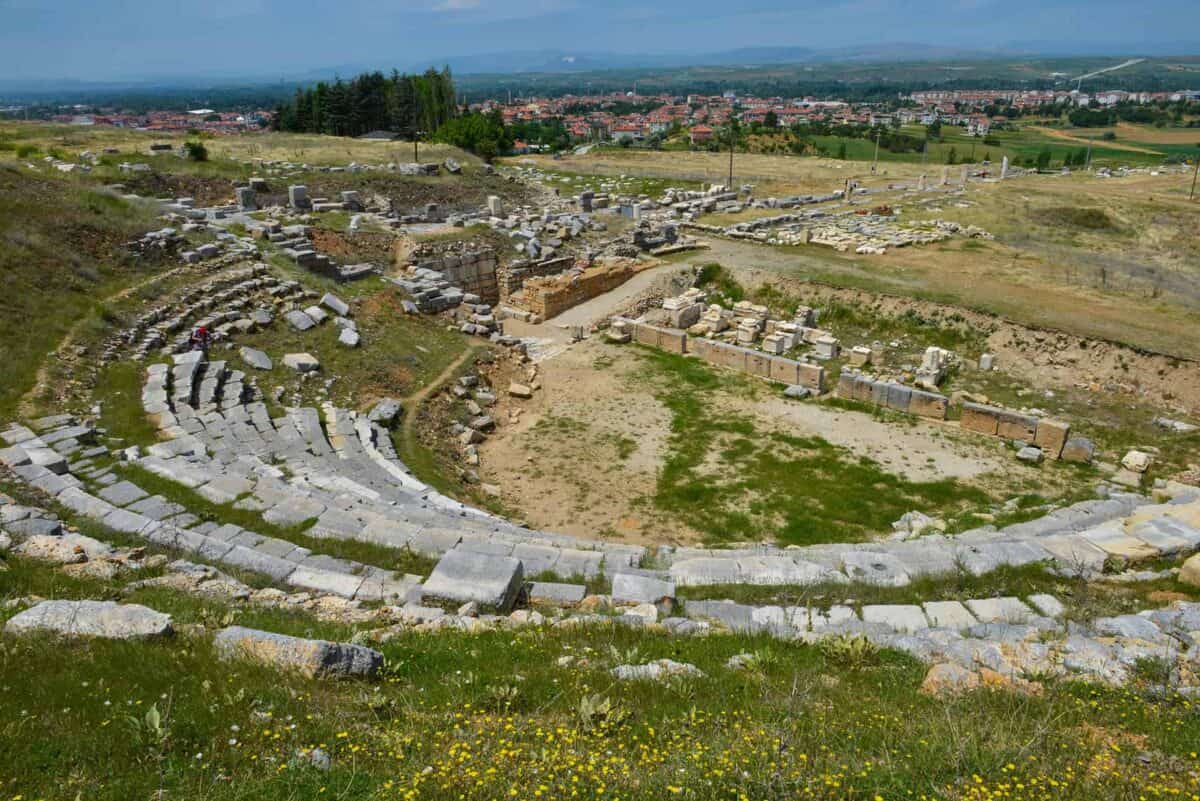
The theater was probably first built during the Hellenistic period. The Romans enlarged it in the third or fourth century AD, extending its stage and increasing its capacity to around 12,000 spectators with 26 rows of seats. It is poorly preserved, and most seats have been removed. The façade of the theater was around 100 meters (328 feet) wide.
Cardo Maximus
The Cardo Maximus is the main north-south street. It runs 400 meters (437 yards) from its intersection with the Decumanus Maximus to a large plaza and nymphaeum. You will see ruts in this street caused by wagons and other wheeled vehicles. The remains of shops line both sides.
Central Church
The remains of the Central Church (also called the Great Church) are across from Tiberius Plateia, near the intersection of the Cardo Maximus and the Decumanus Maximus. Built in the fourth or fifth century AD, it had three aisles. Evidence suggests it was built on top of what was a synagogue, possibly the synagogue where the Apostle Paul preached. However, according to tradition, the Church of Saint Paul to the northwest is the actual place where Paul preached.
Tiberius Plateia (Tiberius Square)
A broad, 11-meter (36-foot) wide colonnaded street leading to Tiberius Plateia is directly across from the Central Church. Numerous stalls lined the sides, which provided space for shops and restaurants. Several game boards with circles and rectangles are etched into paving stones. On the west side of the Tiberius Plateia is a propylon with steps leading up to the Sanctuary of Augustus and to the Temple of Augustus.
Propylon
The propylon was a monumental, triple-arched gate that served as the entrance to the imperial cult sanctuary in front of the Temple of Augustus. It is also where a copy of the Res Gestae Divi Augusti (The Deeds of the Divine Augustus) was displayed. The remains of the Res Gestae are in the Yalvaç Museum.
Sanctuary of Augustus
The sanctuary is a rectangular, open area before the Temple of Augustus. It measures 100 x 85 meters (328 x 280 feet).
Temple of Augustus
This temple, the most important building in Pisidian Antioch, was probably built around 25 AD. It was built on a platform carved out of the rock. It honored Roman Emperor Augustus while he was alive, then dedicated to him as a god after he died and was deified.
The foundation measures 26 x 15 meters (85 feet x 49 feet). Around the back of the temple was a two-story curved portico. You will still see cuts in the rock where the beams were inserted to support and fasten the portico to the curved rock wall. There were two wings on each side of the portico. The portico allowed people to walk completely around the sanctuary and the temple.
Triple-Aisled Church
Returning to the Cardo Maximus, turn right (north) to go to another church and the nymphaeum at the end of the street. The Triple-Aisled church is on the right. You can still see the remains of its three aisles, central apse, and support buildings.
The Nymphaeum
The nymphaeum was a public fountain and the main water supply for the people of Pisidian Antioch. It had a storage tank filled with water from what is now called the Sultan Mountains in the north, brought to the city by an aqueduct.
The remains of the aqueduct are behind the nymphaeum. Some six kilometers (3.7 miles) north of the city, there are also some complete arches (see the map).
The nymphaeum was richly decorated with columns and statues, with water coming from spouts and cascading into pools below.
Roman Bath, Palaestra, and Church
From the nymphaeum, follow the path west (left) to what is believed to be a Roman bath and palaestra. Every ancient Roman city had a bath and gymnasium complex for wrestling and sports practice. An apse on the site evidences a sixth-century church. Next to the church is what was probably the bath.
Church of Saint Paul
Follow the path to the left (south), back toward the entrance, to see the Church of Saint Paul. It is on the right (west) along the city wall. It was built sometime before 381 BC, evidenced by a mosaic bearing the name of Archbishop Optimus, who is known to have attended the First Church Council of Constantinople in 381 AD. The church served as the seat of the metropolitan bishop of Pisidian Antioch.
The church is one of the largest in Asia Minor, measuring 70 x 27 meters (230 x 89 feet), and its narthex is 27 x 13 meters (89 x 42 feet). It had three naves and a semicircular apse, separated from the naves by two rows of 13 columns on hexagonal bases. Parts of its mosaic floor are still in place.
The floor of a synagogue was found under the church. According to tradition, it was here (and not at the Central Church) where the Apostle Paul preached in the synagogue.
Aqueduct
Built during the first century AD, three impressive sections of the aqueduct are 700 meters ( 765 yards) north on the road heading north from the north side of Pisidian Antioch. If you take a taxi and the driver doesn’t speak English, say in Turkish: Antik su kemeri (an-teek soo-keh-meh-ree).
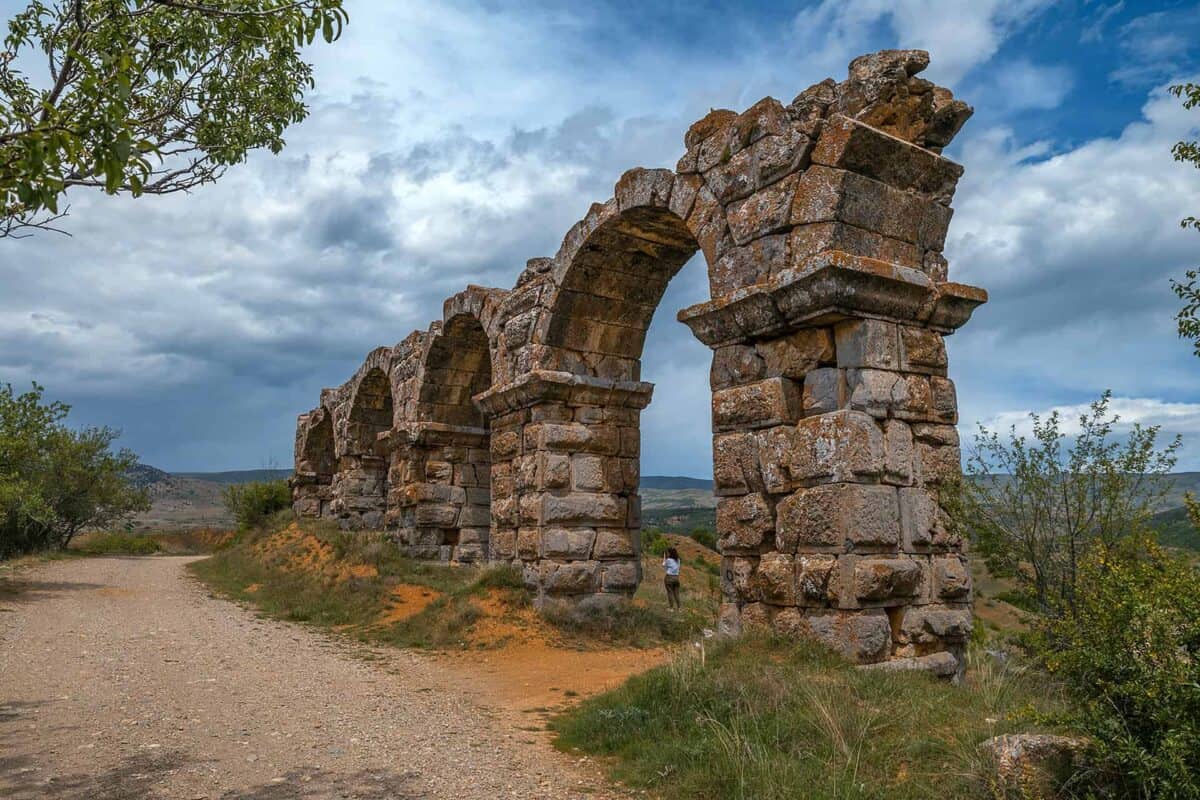
Yalvaç Museum
The Yalvaç Museum, in the adjacent town of Yalvaç, is open every day except Monday from 8:30 AM to 5:30 PM. The ticket office closes at 5:00 PM. It displays artifacts found in Pisidian Antioch and the surrounding areas, has a garden exhibition, and has four halls organized by topic: Prehistoric, Classical, Ethnographic, and Saint Paul.
Artifacts displayed inside include:
- Fragments of the copy of the Res Gestae, Caesar Augustus’s list of accomplishments, which was displayed on both sides of the propylon entrance to the Temple of Augustus
- A stone inscribed with the name of Sergius Paulus, the Proconsul of Cyprus who became a believer after hearing Paul’s message in Paphos, Cyprus.
- Statues, busts, and figurines
- Coins
- Reliquaries
- Medieval weapons
- Font with an inscription about the Apostle Paul said to have come from the Church of Saint Paul.
In the garden are:
- Milestones
- Votive altars
- Sarcophagi
- Grave Stelae
- Columns and Friezes
Address: Görgüorta Mahallesi, Gazipaşa Caddesdi No. 58, Yalvaç, Isparta, Türkiye.
Google Coordinates: 38.29788403170376, 31.179067039364135.
Telephone: 0 246 441 5059.
How to Go to Pisidian Antioch
Pisidian Antioch is one of the lesser-visited ancient sites in Türkiye. It doesn’t get as crowded as the more popular ancient sites. Allow around four hours to inspect the entire site.
How to Get to Pisidian Antioch
From Isparta, take Highway D330 for 87.8 kilometers (54.6 miles). Turn left at the sign for “Pisidia Antiocheia/Yalvaç. Drive 18.6 kilometers (11.6 miles) to Yalvaç. The Pisidian Antioch Archaeological site is at the northeast edge of the town.
Google Coordinates
38.301936, 31.189317
Pisidian Antioch Opening Hours
The Pisidian Antioch archaeological site is open every day.
Summer (1 April to 30 September): 8:00 AM to 7:00 PM.
Winter (1 October to 31 March): 8:00 AM to 5:00 PM.
Note: The ticket office closes 30 minutes before the site closing time.

Ken Grubb
I’m a retired US military investigator and crime scene specialist who has lived in Türkiye for over twenty years. I love learning about and investigating Türkiye’s ancient Christian sites. My archaeologist friends tell me that my old job is much like theirs!

